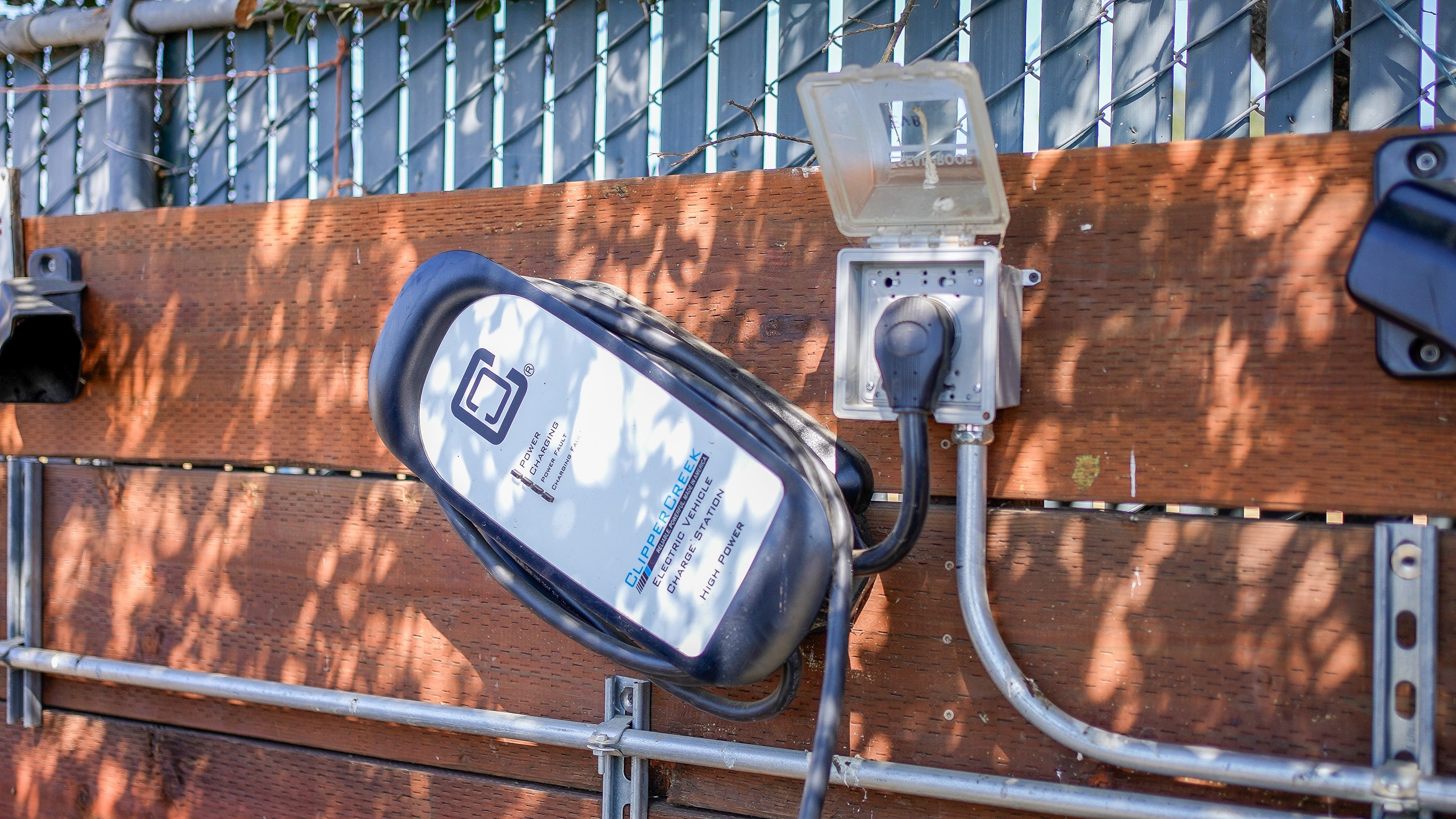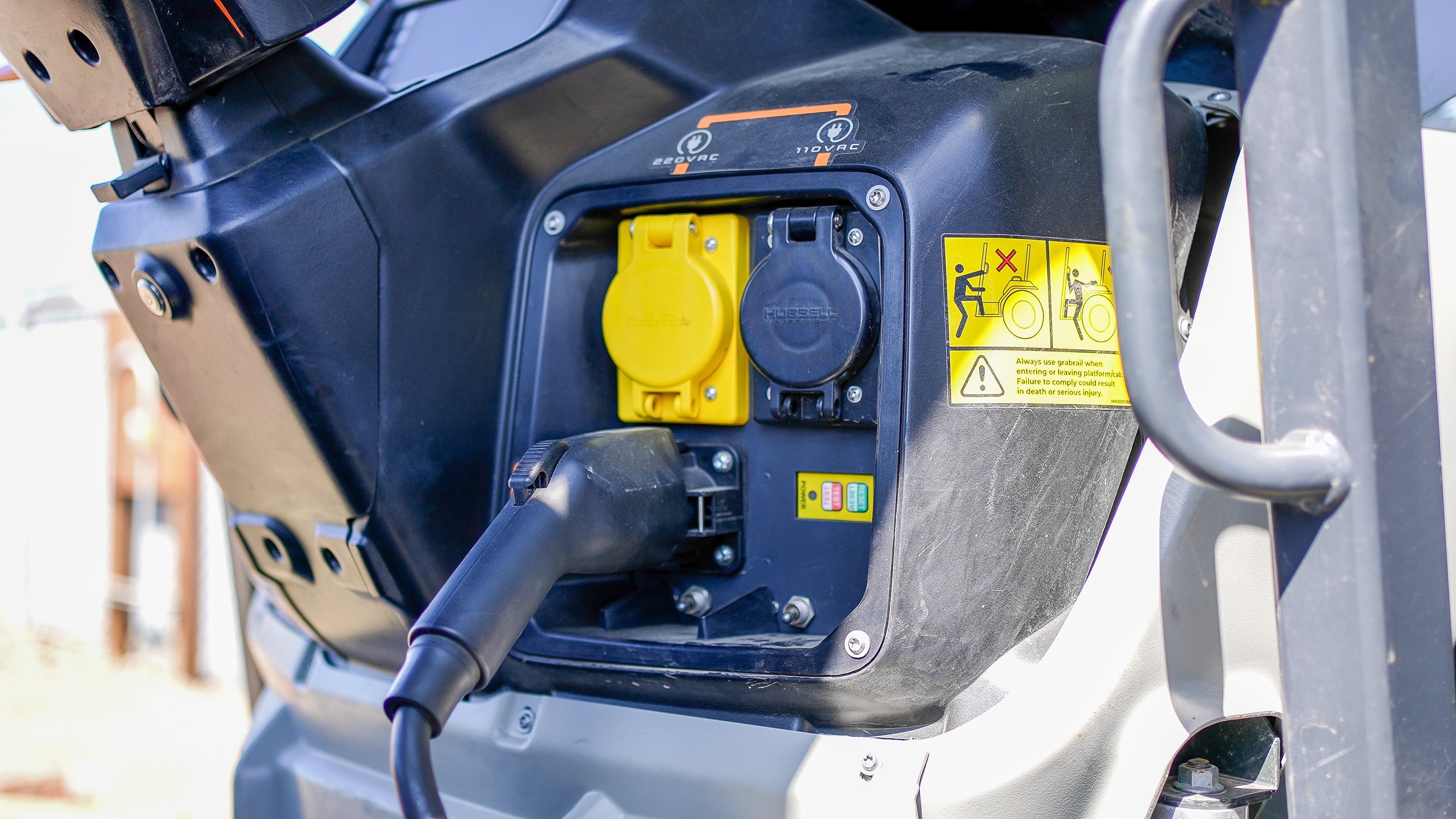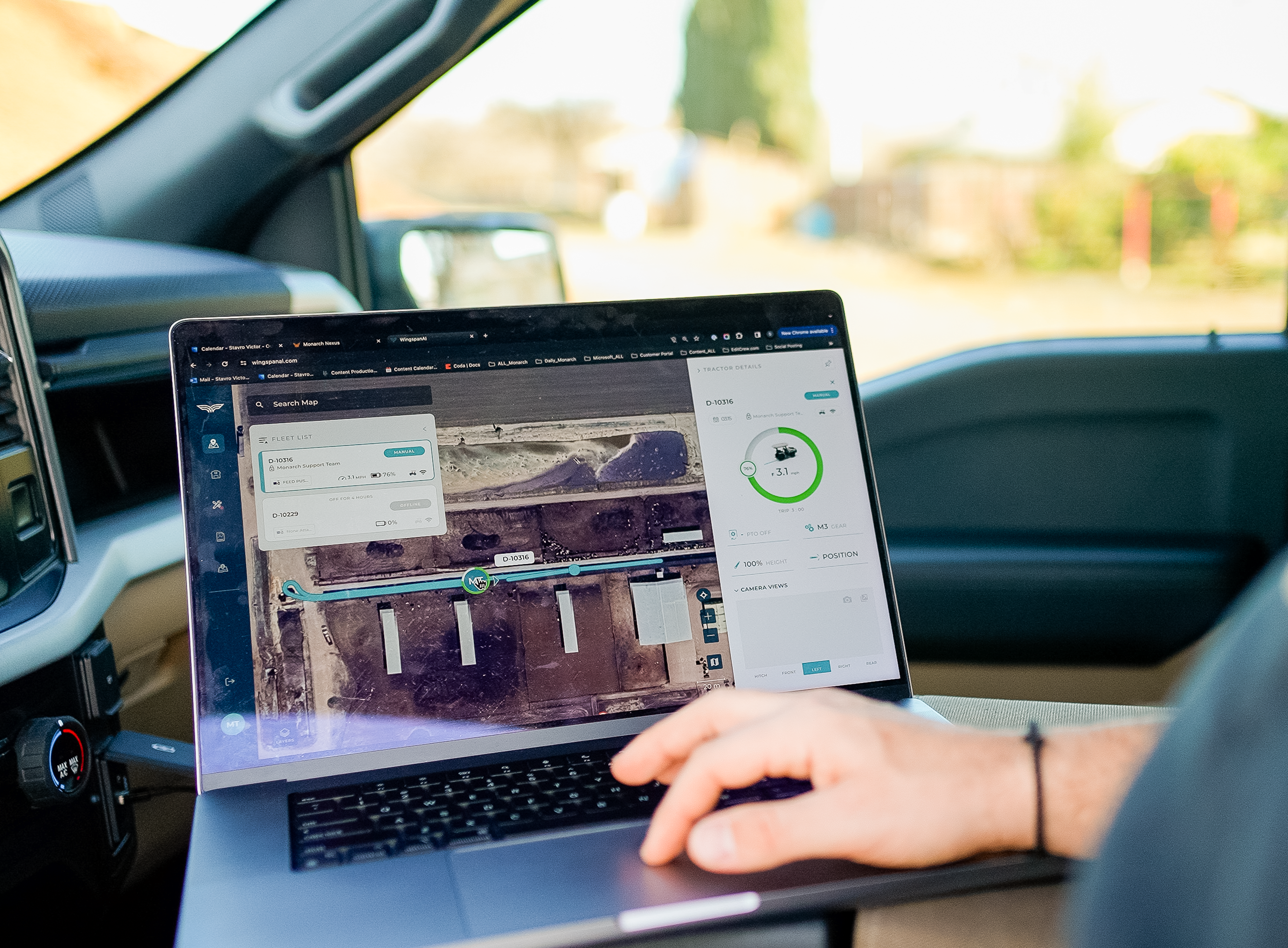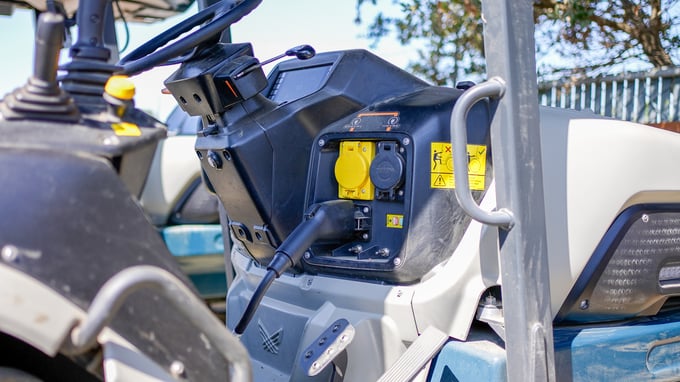Electric vehicles (EVs), which include electric tractors, are low maintenance and cost-effective. Across the ag industry, interest in EV tractors is growing as a highly beneficial solution for agribusinesses of all sizes. Non-ag sectors such as airports, municipalities, and even sod production are also taking notice of the gains that can come with electrification.
But for many farmers, there’s a looming concern: how can you charge an EV without first building an electric vehicle charging station? Is the time and expense justified? The good news is that charging an electric vehicle isn’t as much of a barrier as it might sound and can position your farm for gains today and in the future. As with most large purchases, there are various costs and investment considerations associated with EV charging stations. For an agribusiness, it’s a good idea to explore having an alternative means of keeping your tools, electric vehicles, and equipment — personal and commercial or car and tractor — powered and ready to go. Even a station with just one charger could be part of your electrification solution.
What Are EV Charging Stations?
In a nutshell, EV or electric vehicle charging stations are dedicated power ports to charge an EV’s battery. This includes electric pickup trucks, all-terrain vehicles, and tractors. An EV charging station could be compared to a fuel refilling station. The difference is that “refueling” would take a few hours, typically overnight, but it also eliminates the hassles associated with refueling diesel tractors. 
Unlike fuel stations that consume fossil fuels, EV charging stations provide electric power directly to your electric vehicles’ onboard batteries or backup batteries. While that does take a little longer, it also means you’re not incurring direct and indirect costs associated with handling and storing diesel and your EV tractor won’t produce the toxic emissions of conventional diesel tractors and similar combustion vehicles.
How Do EV Charging Stations Work for Farms?
An EV charging station will connect to your farm’s power grid, operating as another connective point to the grid for electric vehicles. If your home is on your farm, you can also connect your charging station to your home’s power grid, in which case it takes its electricity from the same source as your residential property.
It’s important to keep in mind that charging EVs isn't quite the same as plugging your phone into the wall outlet. Naturally, the more amps that you can provide for your EV, the faster the charge will be completed. However, it can take several hours to fully charge your battery and while that does increase electricity costs, when comparing electric power economics with diesel, electricity is typically, by far, the more cost-effective solution and not as vulnerable to fluctuating prices. Some farmers opt to take their energy savings and energy independence even further with EV charging stations that draw energy from a battery storage system powered by renewable energies such as wind, hydro, or solar. Some dairy farms are even converting methane into electricity with methane digesters.

Ag Solar & EV Charging Stations
When it comes to renewable energies in the U.S., solar is gaining traction, ranking just behind wind and hydro. Ag solar derives its energy directly from sunlight, which can then be used as a power source for electric vehicles. In short, solar lowers the bills. However, electric utility providers explain that customers often have the misconception that they can hook their solar directly to their EV charging station. This is, in fact, not the case because voltage fluctuations are unhealthy for the charger and the EV. Instead, a farmer has two options; use the grid as a virtual battery or install their own on-farm energy storage device.
Embracing ag solar power lowers electricity costs, reduces dependence on external inputs, further reduces emissions, and provides a convenient power source for other tools and equipment, even in remote areas. The United States Forest Service is one example of an organization leveraging solar-powered EV charging stations to power equipment in locations that might not otherwise have access to it. Increasingly, farms are turning to ag solar and other renewables to lower the bills and strengthen energy resiliency.
One common concern over using solar as an energy source is the misconception that solar panels won’t work in cloudy weather. Although most effective in direct sunlight, photovoltaics do work with indirect sunlight and even benefit from the occasional rain to wash off accumulated dirt and other particulates that can make solar panels operate less efficiently.
What Are the Different Types of EV Charging Stations?
Depending on the EV charging station, there are different levels of charging speeds and different types of outlets. These include:
- Level 1 chargers, which provide charging through a normal residential 120 V AC outlet. With a Level 1 charger, it may take 40-50 hours to charge a battery electric vehicle (BEV) or 5-6 hours for a plug-in hybrid electric vehicle (PHEV) to go from 0% to 100% charged.
- Level 2 chargers offer high-speed AC charging through 240 V or 208 V electrical services. These can charge an EV from empty to full in 4 to 10 hours or so.
- Level 3 chargers, also known as direct-current or DC fast charging equipment, require 480 V to convert AC power to DC power within itself. The other charger levels rely on the on-board charger of the EV to complete this conversion. The difference means an EV could be fully charged in 15 to 90 minutes (depending on the size and charge acceptance rate of the vehicle).
.jpg?width=3840&height=2160&name=MT_Sept23_Beckstoffer-185%20(1).jpg)
That said, there may be limitations as to what types of charging stations are permitted on farms or for use by off-road equipment. As the agricultural sector shifts more and more into electrification, it’s important to check with the manufacturer of your farm equipment to ensure you stay informed on how and where you can charge up. If you’re installing an EV charging station, it’s a good idea to share charging specifications with your electrician.
What Are the Economic Benefits of On-Farm EV Charging Stations?
When it comes to analyzing the benefits and risks of installing an EV charging station, there are many gains that can justify the initial expense. These include:
Accumulated Savings
When you rely on the electrical grid, you’ll be freeing yourself from fossil fuel reliance and taking another step forward toward energy independence (depending on your electric utility, power generation can range with being nearly carbon free or still include high-polluting sources like coal). The price for electricity is typically much lower than it is for diesel and much less volatile from month to month. This is doubly true if your charging station uses renewable or alternative energy sources in addition to grid connections. It's also worth noting that some electric utility suppliers anticipate getting to the point where smart meters can take advantage of dynamic pricing and automatically draw power during the most price advantage time of day for even greater savings.
Independence & Resilience
An EV charging station is the first step to moving an agribusiness towards greater independence and resiliency against external energy-related issues such as diesel costs and blackouts. It also opens the door for a farmer to take advantage of future developments in electrification and AgTech. Finally, by eventually adding an on-farm battery to store power from renewable energy sources a farm can become completely energy independent and enjoy the tremendous financial savings and self-sufficient security that goes with it. .png?width=3840&height=2160&name=MT_April23_BobbyVineyards-PV-65-edited%20(2).png)
Portable Power
A farm set up with a charging station and an electric tractor capable of doubling as an energy storage device brings valuable portable power to a farm. The MK-V by Monarch Tractor, a data-driven, driver-optional, and 100% electric tractor, accomplishes this by storing energy in its battery that can be used with equipment on other areas of the farm. This tractor is equipped with a 12V, 110V and 220V outlets and farmers have reported being surprised at how handy this feature has proven to be, especially during blackouts. During vineyard harvest season, where operations often take place at night, light towers are powered by the MK-V, eliminating the need for noisy and smelly generators. .jpg?width=3840&height=2160&name=MT_Sept23_Beckstoffer-168%20(2).jpg)
Overall Time Savings
Charging stations can recharge dead or low batteries during off-peak hours, freeing up time during the workday that would normally be spent on diesel runs or filling up backup fuel cans. For perspective, Monarch’s MK-V battery can be fully charged in less than six hours and last for up to 14 hours depending on the farm, operation, and implement. Customers are saying the MK-V has been lasting a full eight-hour workday while pulling an implement and up to 10 hours with battery power to spare.
Better Quality Crops
Having an on-farm EV charging station makes it easy to deploy battery tractors for operations. Because electric tractors have zero emissions, farmers gain a cleaner, healthier work environment and crops that are free from diesel emission particulates. Clean air is healthier for plants, soils, and people. A Monarch MK-V owner declared that his grapes taste better without being subjected to diesel fumes. Using an electric tractor is one way to help grow a premium product and an appealing selling point to food retailers and food processing businesses.
How Much Do EV Charging Stations Cost?
Depending on the size of your charging station, its level, where it’s installed, and the energy sources it draws from, there’s a wide range of potential costs for EV charging stations. While there are initial setup expenses to set up, the potential savings in the long run should more than make up for it.
Costs of Different Types of Charging Stations
It can cost anywhere between hundreds or thousands of dollars to purchase and install a level 2 or level 3 charger for use on your property. The total amount will vary depending on the infrastructure a farm already has in place, how remote it is, and the farm’s EV current and future plans.
Charging Costs
Naturally, the cost of charging depends on a farm’s charging needs and how much electricity is drawn from the grid. The urban mobility sector provides a good starting point for estimating the costs to charge an EV tractor. For an EV passenger car, the Kelly Blue Book cites an average cost of anywhere between $.30 and $.60 per KWh (kilowatt hour). The exact cost will depend on your tractor’s battery capacity as well as local electricity rates..jpg?width=3840&height=2160&name=MT_May23_Dairy-Riley-348%20(1).jpg)
2 Key Considerations Before Investing in an EV Charging Station
When assessing the risk-reward equation of installing EV charging stations on a farm, it’s important to consider two things that are easy to overlook: financial incentives and comprehensive return on investment.
Financial Incentives
When it comes to EV charging stations, help is available in the form of financial incentives. The far-reaching health and savings benefits that increased electrification brings to a region has led to a variety of regional, state, and federal government programs that provide incentives for anyone looking to make the switch to electricity. The U.S. Department of Energy’s Alternative Fuels Data Center is a single source for incentives available in each state that are related to use of alternative fuels, including electric charging stations.
Some programs, like California’s Carl Moyer Program, provides financial incentives on the purchase of an EV tractor as well as charging infrastructure. Be sure to ask your EV tractor manufacturer for any federal, state, or local financial incentives that you may be qualified to receive and requirements for each program. A reputable tractor manufacturer will have specialists available to work with you directly.
Return on Investment
The potential ROI for installing an EV charging station can play a key role in supporting your EV decision. While calculating ROI for a charging station, a farmer should factor in any increased savings that comes with deploying technology that’s enabled by the charging station. The MK-V offers a good case study in how a tractor can be engineered to improve a farm’s profitability. In addition to providing all the functionality of a comparable diesel, the MK-V enhances farm operations in the field and the office. By pairing electrification with connectivity and automation, farm managers save time and money with increased visibility into operations, simplified reporting capabilities, unprecedented safety features, and much more, all of which improve a farm’s profitability and productivity. It does all this while empowering a farmer to choose land management strategies that are healthier for the environment, farm workers, and consumers.  There’s another element to ROI. Historically, there hasn’t been much need for on-farm power generation as electricity has only powered a tiny fraction of farm operations. But by embracing electric tractors like the MK-V, there’s a good reason for investing in solar and clean energy as an electric fleet would enable faster payback for renewables, open up energy storage opportunities, and promote energy independence. There are an increasing number of forward-thinking farms that are making the shift to be 100% electric.
There’s another element to ROI. Historically, there hasn’t been much need for on-farm power generation as electricity has only powered a tiny fraction of farm operations. But by embracing electric tractors like the MK-V, there’s a good reason for investing in solar and clean energy as an electric fleet would enable faster payback for renewables, open up energy storage opportunities, and promote energy independence. There are an increasing number of forward-thinking farms that are making the shift to be 100% electric.
How Do You Prepare for EV Charging Station Installation?
Preparing for the installation of an EV charging station requires a few steps. The US Department of Transportation has a helpful electric vehicle supply equipment infrastructure checklist broken into four key categories:
- Project development and scoping
- Utility planning
- Installation planning
- Operational planning
It’s important to keep in mind that this checklist is broad in scope and not designed for a specific use case. It’s wise to consult with the equipment manufacturer about the charging specifications that are necessary to run specific machinery and meet your needs.
Power Play
An EV charging station can be a wise choice for your farm in the long run, especially if moving towards electrification is part of your farm’s strategy for remaining competitive. By being prepared for the transition to electricity you’ll be positioned to reap the gains of greater energy independence and all the financial benefits associated with using innovative, electric AgTech.
References:
“United States Forest Service Leverages EV Charging Solution for Remote Areas.” U.S. Department of Energy.
https://www.energy.gov/femp/united-states-forest-service-leverages-ev-charging-solution-remote-areas
“Charger Types and Speeds.” U.S. Department of Transportation.
https://www.transportation.gov/rural/ev/toolkit/ev-basics/charging-speeds
“How Much Does It Cost To Charge an Electric Car?” Kelley Blue Book.
https://www.kbb.com/car-advice/how-much-does-it-cost-to-charge-an-ev/#cost-per-kwh
“EV Infrastructure Project Planning Checklist.” U.S. Department of Transportation.
https://www.transportation.gov/rural/ev/toolkit/ev-infrastructure-planning/project-planning-checklist




